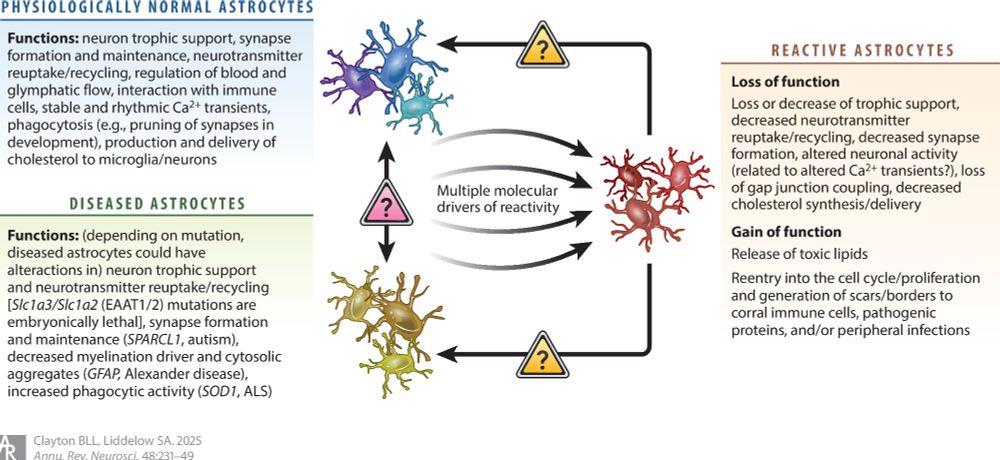Shane Liddelow
@liddelowsa.bsky.social
3K followers
270 following
300 posts
Neuroscientist and glial aficionado at NYU Grossman School of Medicine/NYU Langone Health in NYC. Posts in my individual/personal capacity.
My lab is full of awesome people doing amazing stuff - check them out: www.liddelowlab.com
he/him
Posts
Media
Videos
Starter Packs
Reposted by Shane Liddelow
Shane Liddelow
@liddelowsa.bsky.social
· Aug 13
Shane Liddelow
@liddelowsa.bsky.social
· Aug 13

Microglial IKKβ Alters Central and Peripheral Immune Activity at Distinct Time Points After Spinal Cord Injury
Microglial NF-kB signaling increases M1-like spinal microglia over time after spinal cord injury. Microglial NF-kB signaling broadly affects gene expression in spinal cord. Microglial NF-kB signalin...
onlinelibrary.wiley.com
Shane Liddelow
@liddelowsa.bsky.social
· Aug 13

Subtle Alterations in Hippocampal Neuronal Activity Coincide With Early Sex‐Specific Differences in Amyloidosis and Microglia in a Pre‐Symptomatic Mouse Model of Alzheimer‐Like Pathology
In a pre-symptomatic mouse model of Alzheimer disease, despite higher amyloid-β load females display less plaques than males. More efficient synaptic transmission as well as less microgliosis point ...
onlinelibrary.wiley.com
Shane Liddelow
@liddelowsa.bsky.social
· Aug 13

Nuclear Profilin‐1 for DNA Damage Repair Is Involved in Phagocytic Impairment of Senescent Microglia
Cytosolic PFN1 relocates to the nucleus for DNA repair. Senescent microglia show nuclear PFN1 accumulation. Nuclear F-actin impairs phagocytosis in senescent microglia. Cytochalasin D failed to retu...
onlinelibrary.wiley.com
Shane Liddelow
@liddelowsa.bsky.social
· Aug 13

Myelin Formation by Oligodendrocytes Is Enhanced Through Laminin‐411 and Its Derived Peptide
Laminin (LM) α1, α2, and α4 chains are expressed at the myelination stage of oligodendrocyte (OL). LM411 and its E8 fragment enhance OL myelin membrane formation. A4G47 from LM411E8 is a novel pepti...
onlinelibrary.wiley.com
Shane Liddelow
@liddelowsa.bsky.social
· Aug 13

Astroglial CB1 Reveal Sex‐Specific Synaptic Effects of Amphetamine
Astroglial CB1 mediate long-term depression in the NAc through purine release. Amphetamine occludes LTD in male mice by inducing the saturation of A1 receptors. Astroglial CB1 mediate behavioral amp...
onlinelibrary.wiley.com
Shane Liddelow
@liddelowsa.bsky.social
· Aug 13

Death in the Taste Bud: Engulfment of Dying Taste Receptor Cells by Glial‐Like Type I Cells
Dying taste cells display morphologies consistent with apoptosis. Glial-like Type I cells engulf dying neighbors, perhaps acting as ‘undertakers’. No Type I cells display signs of apoptosis–all earl...
onlinelibrary.wiley.com
Shane Liddelow
@liddelowsa.bsky.social
· Aug 13

The Aquaporin‐4 Expression and Localization in the Olfactory Epithelium Modulate the Odorant‐Evoked Responses and Olfactory‐Driven Behavior
AQP4ex and OAP-forming AQP4M23 are expressed in non-neuronal cells of the olfactory epithelium. AQP4ex-KO and OAP-null mice show reduced cell density, including OSNs, and impaired odor responses and...
onlinelibrary.wiley.com
Shane Liddelow
@liddelowsa.bsky.social
· Aug 13

FABP7 Expression Modulates the Response of Astrocytes to Induced Endotoxemia
FABP7 silencing reduces inflammatory response in astrocytes. FABP7 silencing decreases astrocyte-mediated neurotoxicity. FABP7 silencing attenuates NF-κB-dependent transcriptional response during en...
onlinelibrary.wiley.com
Shane Liddelow
@liddelowsa.bsky.social
· Aug 13

Starvation Induces Upregulation of Monocarboxylate Transport in Glial Cells at the Drosophila Blood–Brain Barrier
We identify Yarqay, a proton-coupled monocarboxylate transporter in Drosophila glial cells, which mediates starvation-induced transport at the blood-brain barrier, acting as a novel component of the...
onlinelibrary.wiley.com
Shane Liddelow
@liddelowsa.bsky.social
· Aug 13

Astrocyte Extracellular Matrix Modulates Neuronal Dendritic Development
In vivo neonatal ethanol: increases dendritic arborization inhibits astrocyte translation of CS-GAGs biosynthetic enzymes Chpf2 and Chsy1 reduces CS-GAG levels Chpf2-slienced astrocyte-condition...
onlinelibrary.wiley.com
Shane Liddelow
@liddelowsa.bsky.social
· Aug 13

Role of Cx43 and ACKR3 in Modulating Astrocytic Response and Neuronal Survival Post‐Subarachnoid Hemorrhage
ACKR3 interacts with Cx43 to inhibit GJIC in astrocytes in SAH mice. ACKR3 activation promotes Cx43 internalization, inhibiting GJIC and increasing YAP nuclear translocation. Inhibition of GJIC enha...
onlinelibrary.wiley.com
Shane Liddelow
@liddelowsa.bsky.social
· Aug 13

Interplay Between Schwann Cells and Peripheral Cancers: Mechanisms and Therapeutic Targets in Cancer Progression
Schwann cells drive disease progression via immune evasion, neuronal remodeling, perineural infiltration, spinal glial suppression, and tumor proliferation/migration. Their multifaceted roles positi...
onlinelibrary.wiley.com
Shane Liddelow
@liddelowsa.bsky.social
· Aug 13

Neural Stem Cell‐Derived Astrogliogenesis: The Hidden Player of the Adult Hippocampal Cytogenic Niche
Neural stem cells can give rise to astrocytes in the adult hippocampus via asymmetric or direct differentiation. Astrogliogenesis is regulated by intrinsic and extrinsic factors. Impaired astrogliog...
onlinelibrary.wiley.com
Reposted by Shane Liddelow
Shane Liddelow
@liddelowsa.bsky.social
· Jul 22
Shane Liddelow
@liddelowsa.bsky.social
· Jul 11








